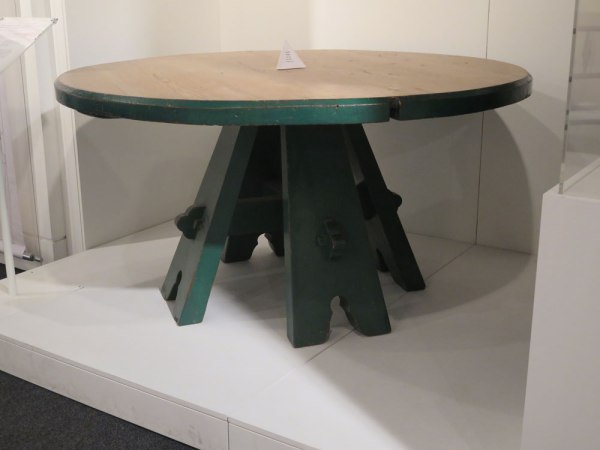
Editor’s note: Search around for information on how to achieve a “scrubbed finish” and you will encounter a comedy of chemistry. People try to achieve this with all manner of stains and caustic chemicals. A real scrubbed finish is simply bare wood that has been cleaned and cleaned – getting better over time. Alan Peters explains:
At times this (a flawless finish) disturbs me, for the surface that some admire and some craftsmen strive to satisfy has little to distinguish it from a piece of plastic laminate; for that is precisely what the surface has become, after the grain has been filled and endless coats of plastic film have been applied and painstakingly rubbed down.
Natural wood finishes, such as oil and wax, are very susceptible to marking in their early stages and do require care and attention. Frankly, this dilemma of finding wood finishes that leave the material looking like wood, resist marking, and improve rather than deteriorate with age, has dogged me and often defeated me these past 20 years….
For example, a scrubbed finish to an oak dining table, so favoured by the Cotswold School, is a beautiful surface, immensely practical in use, improving with age and developing a wonderful surface texture that would look fine in many situations, especially in the older farmhouse or cottage-style dwelling, and for most of the time it requires no more than a wipe over with a damp cloth after a meal.
However, it is also virtually colourless, just a bland uniform silvery grey. It has none of the colour variations of say a rosewood veneer or an oiled elm surface, and it is this richness of colour and grain that many of us find attractive about wood, so one has to move in this instance to a finish that heightens and preserves these characteristics….
Scrubbed and Washed Finishes
Ten years ago on moving to Devon I needed to make a pine kitchen/dining table quickly for our own use. Today, it is a beautiful golden colour similar to old stripped pine with not a bruise and hardly a scratch to be seen. We do not use a table cloth, only place mats, and we have never treated it at all gently. Yet, all that it has received in treatment or finish is a regular wipe over with a damp cloth after use and, once a month perhaps, it is thoroughly washed and scrubbed with hot water and household detergent. The hot water raises any bruises and scratches and the table looks like new, or rather, even better than new, for it has acquired a lovely patina now. There is no comparison with the treacly, bruised and scratched polyurethane surfaces so often encountered with modern manufactured pine tables.
A scrubbed finish is not restricted to pine, and I have used it for dining and kitchen tables and sideboards in oak, chestnut, pine, cedar and also sycamore. In the case of the latter, if an occasional wash with household bleach is substituted for the detergent, a beautifully white spotless surface will result.
My only regret is that I cannot persuade more of my customers to have this finish.
— Alan Peters, “Cabinetmaking: The Professional Approach, 2nd edition” (Linden)